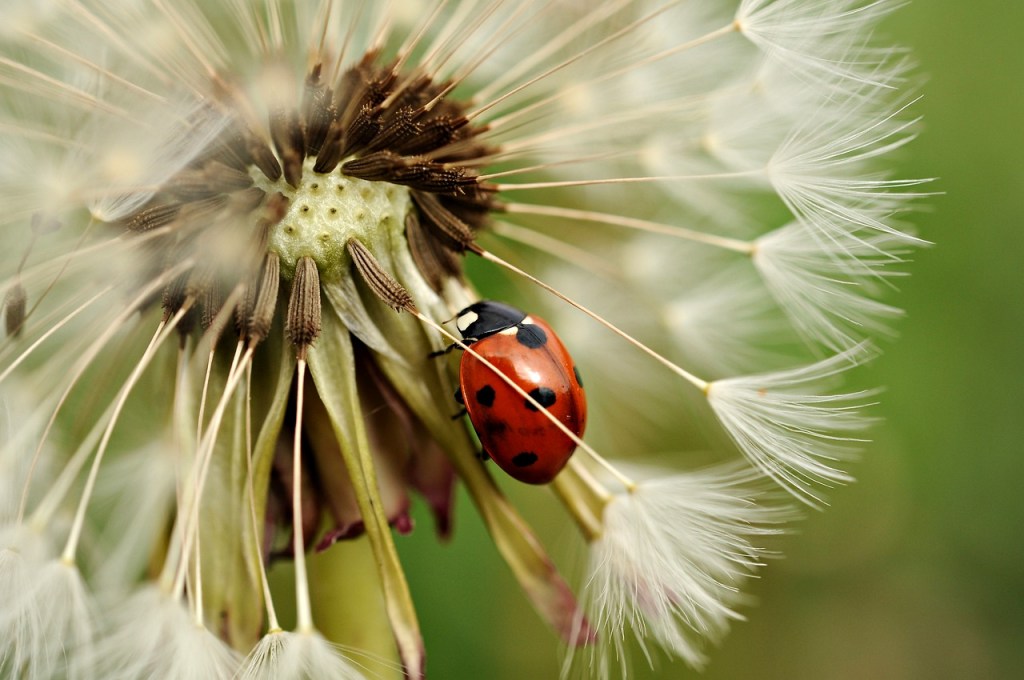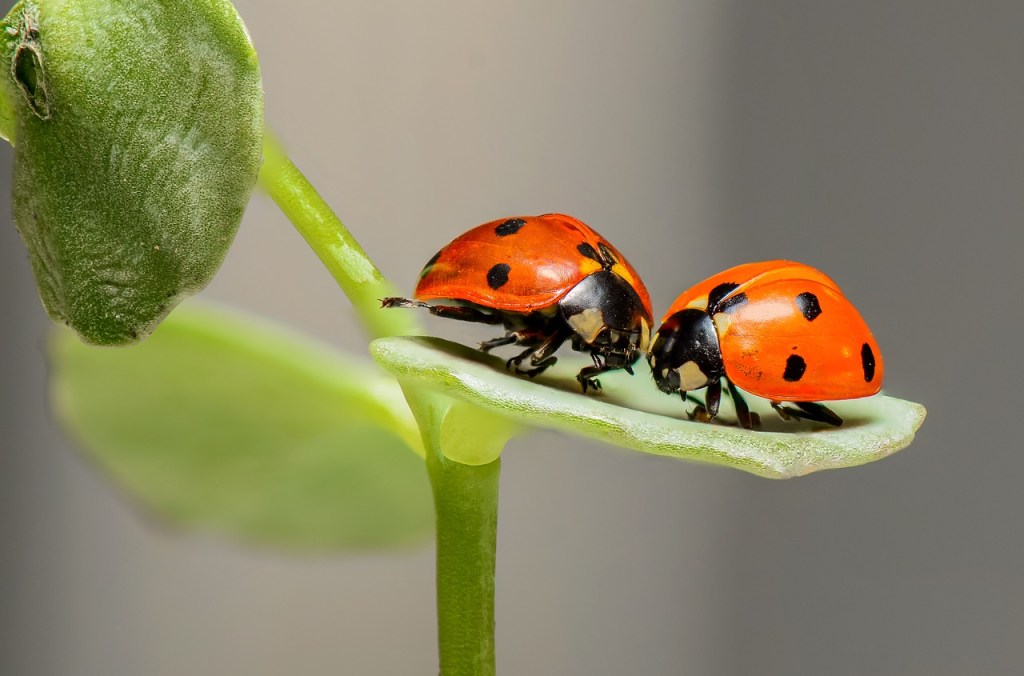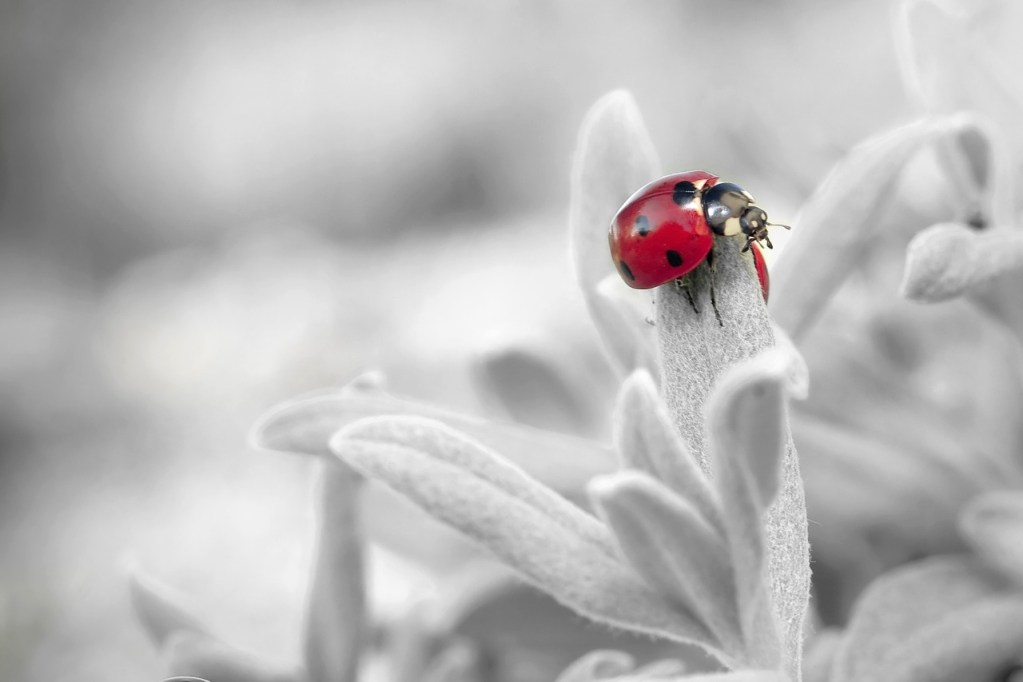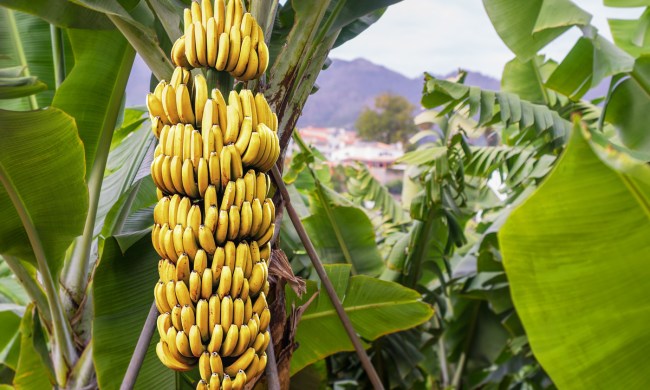Pest control is a hot topic of conversation for many gardeners. Pests can ruin your garden, whether you’re growing flowers, fruits, or vegetables. Naturally, gardeners are always on the lookout for effective pest control methods to try. Not every idea is a winner, though, and some of them can actually do more harm than good.
Releasing ladybugs into gardens is one such pest control trend. Although these natural pest predators can help keep the pests at bay, releasing them into your yard can have consequences for your garden’s ecosystem. Here’s everything you need to know about ladybug pest control.

Why do people use ladybugs as pest control?
Ladybugs are the natural predator of some of the most common garden pests. They eat aphids and mites, which are small but can do quite a bit of damage. Ladybugs are also relatively inexpensive, depending on the exact type you get. The idea behind the method is that the ladybugs will eat the pests that are bothering the plants and reproduce, increasing the overall population of ladybugs.
The more ladybugs you have living in your garden, the fewer pests you’ll have bothering your plants, so it seems logical to release ladybugs to control your pest problems. While this sounds like an excellent plan in theory, there are a few key issues with releasing ladybugs yourself.

The impact of ladybugs
Ecosystems are delicate, and it’s impossible to know every impact of releasing an animal into a new environment. However, there are a few things we do know about releasing ladybugs.
For starters, there’s no guarantee that the ladybugs you release will eat the pests you want them to eat or even stay in your garden. Once released, there’s no telling where they’ll go unless you release them in a contained space like a greenhouse. This can have a ripple effect, especially if the ladybugs you’re releasing aren’t native to the area.
A bigger problem is that ladybugs sold for release can have parasites or diseases, which spread rapidly through the local ladybug population. In short, you release ladybugs to increase the population but end up with far fewer ladybugs over time. This typically occurs when the ladybugs being sold are harvested from the wild rather than raised in a controlled environment.

Can you course correct?
If you’ve released the ladybugs recently, you may be able to recapture some of them. However, if the ladybugs have already scattered to the wind, then there isn’t much that can be done to recapture all of them. What steps should you take?
- If you’ve already released ladybugs, the first thing to do is to check the company you got them from. If they specify that the ladybugs were farmed or raised in controlled conditions, then you’re in luck! Farmed ladybugs are significantly less likely to carry parasites or diseases due to the care they receive. If the company doesn’t say or specify they were caught in the wild, then there could be problems.
- Consulting with your local specialist can give you a clearer picture of the potential impacts specific to your area, and they may have some ideas for mitigating the danger. You might be tempted to release more healthy ladybugs in an attempt to offset the potentially sick ones. Unless your local specialist approves, you shouldn’t do this. It may help boost the population in the short term, but the healthy ladybugs could become infected once they are released.
- The best thing to do, after consulting with a specialist, is to wait. We often prefer quick solutions, but sometimes the best course of action is to give it time. Once the potentially sick population has died out and the disease has run its course, then you can release safely farmed, healthy ladybugs.

What are some good alternatives?
If your garden has a thriving aphid population, then your local ladybug population may already be on its way to you. However, you can make your garden more attractive to them by adding a variety of brightly colored flowers. Be careful not to get rid of juvenile ladybugs, too! They aren’t quite as recognizable as mature ladybugs, which can sometimes lead to them being mistaken as pests. Capsaicin spray and insecticidal soaps can also be a great help in reducing the pest population. They are also much safer than many other pesticides, so you can breathe a sigh of relief, knowing you aren’t harming pollinators.

What about yellow ladybugs?
Some gardeners may be wondering if there is a difference between red ladybugs and yellow ladybugs, and if one is better or worse to release into your garden. However, yellow ladybugs aren’t actually ladybugs – they’re Asian lady beetles, an invasive species from the same family. Aside from color, you can identify Asian lady beetles by their spots. Ladybugs have fewer spots than Asian lady beetles.
Since they’re invasive, Asian lady beetles are even worse to release into your garden! While they will also eat aphids and mites, Asian lady beetles have a tendency to invade homes during cold weather, making them more of a nuisance. While they aren’t dangerous, they can cause discomfort if they land on your skin. When threatened, they release a yellow substance from their legs that can irritate the skin or cause minor allergic reactions.
So if you’ve ordered ladybugs to release in your garden, only to discover they are yellow and have more spots, you’re dealing with Asian lady beetles. Dispose of them rather than release them!
Releasing insects and animals into places where they weren’t before isn’t a great idea in general, but now you have a better understanding of why ladybugs in particular can be a bad choice. You can lure native ladybugs to your garden, use alternative pest control methods, or, if your heart is set on releasing ladybugs, get ladybugs that have been raised in controlled conditions to mitigate the risk of diseases. If you’ve already released ladybugs, you can attempt to recapture them, but it’s more important that you don’t release any more. Your local ladybug population will recover eventually, and, if you’re lucky, they may even visit your garden.




